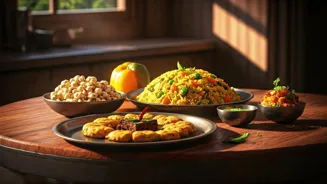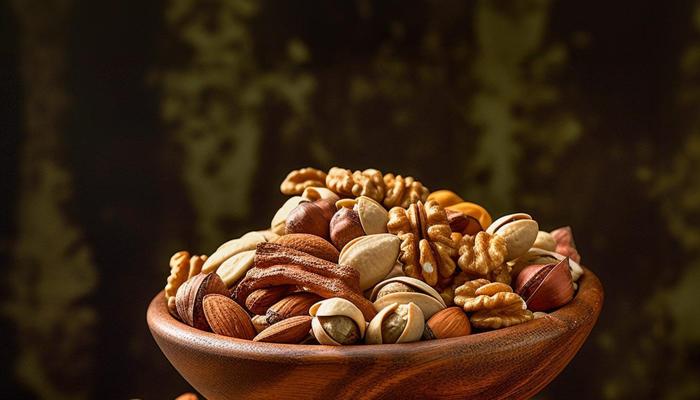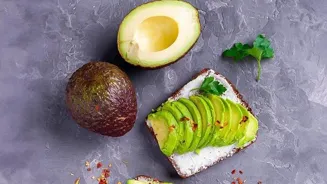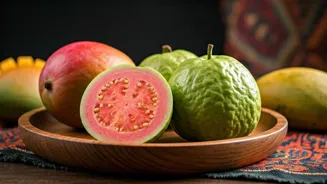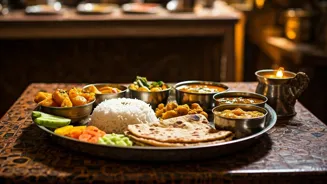Discover the hidden power of pulses in Indian cuisine! Dive into nutritious recipes and elevate your health
For generations, Indian kitchens have embraced the humble pulse as a dietary cornerstone. From
the creamy dal makhani of the North to the tangy sambar of the South, pulses are woven into the fabric of our culinary traditions.
But beyond their delicious taste, pulses are nutritional powerhouses, offering a wide array of health benefits that are increasingly recognized by nutritionists and health-conscious individuals alike.
They are affordable, accessible, and incredibly versatile, making them an ideal ingredient for everyday cooking.
Pulses, including lentils, chickpeas, various beans, and peas, are an excellent source of plant-based protein.
This makes them particularly valuable for vegetarians and those looking to reduce their meat consumption. Protein is essential for building and repairing tissues, supporting muscle growth, and boosting immunity.
Incorporating pulses into your daily diet can help you meet your protein requirements without relying heavily on animal products. This is especially important in India, where vegetarianism is widely practiced, and pulses serve as a crucial source of protein for a large segment of the population.
Pulses are rich in fiber, both soluble and insoluble. Soluble fiber helps regulate blood sugar levels and lowers cholesterol, which is a major risk factor for heart disease. Insoluble fiber promotes healthy digestion and prevents constipation.
The high fiber content of pulses also contributes to a feeling of fullness, which can aid in weight management by reducing overeating. For those struggling with weight issues or seeking to maintain a healthy weight, pulses can be a valuable addition to their diet.
The slow-releasing carbohydrates in pulses also provide sustained energy, preventing energy crashes and keeping you feeling energized throughout the day.
Pulses are packed with essential vitamins and minerals, including iron, folate, magnesium, and potassium.
Iron is vital for preventing anemia, a common problem in India, particularly among women and children. Folate is essential for cell growth and development, making it especially important during pregnancy.
Magnesium plays a role in nerve and muscle function, while potassium helps regulate blood pressure. By incorporating pulses into your diet, you can ensure you are getting a good dose of these essential nutrients.
This is particularly important for individuals who may not be getting enough vitamins and minerals from other food sources.
Pulses are also known for their low glycemic index (GI), which means they release glucose slowly into the bloodstream.
This helps prevent spikes in blood sugar levels, making them a good choice for people with diabetes or those at risk of developing the condition. The low GI of pulses also contributes to sustained energy levels and helps regulate appetite.
If you are looking for foods that can help you manage your blood sugar levels and prevent diabetes, pulses should be a regular part of your diet. Their ability to stabilize blood sugar makes them a valuable tool in managing overall health and well-being.
Beyond their nutritional benefits, pulses are also environmentally sustainable. They require less water and fertilizer to grow compared to many other crops, making them a more eco-friendly food choice.
Pulses also have the ability to fix nitrogen in the soil, which reduces the need for synthetic fertilizers and improves soil health. By choosing to consume pulses, you are not only benefiting your own health but also contributing to a more sustainable food system.
This is an important consideration in today's world, where environmental concerns are becoming increasingly pressing. So, embrace the power of pulses – for your health and for the planet!
Nutritious Indian Recipes to Try
Here are a few simple and delicious Indian recipes that showcase the versatility of pulses:
Masoor Dal (Red Lentil Soup)
This is a quick and easy recipe, perfect for a weeknight meal. Simply sauté onions, ginger, and garlic, then add red lentils, turmeric, and water. Simmer until the lentils are tender, then season with salt, chili powder, and a squeeze of lemon juice. Serve with rice or roti.
You can also add some chopped vegetables like tomatoes or spinach for extra nutrition. The simplicity of this recipe makes it a great option for beginners in the kitchen.
Chana Masala (Chickpea Curry)
This classic North Indian dish is packed with flavor and protein. Soak chickpeas overnight, then boil them until tender. Sauté onions, tomatoes, ginger, garlic, and a blend of spices, including garam masala, cumin, and coriander. Add the chickpeas and simmer until the gravy thickens.
Garnish with cilantro and serve with naan or rice. This dish is a crowd-pleaser and can be easily adapted to your spice preference.
Moong Dal Cheela (Lentil Pancakes)
This is a healthy and delicious breakfast or snack option. Soak moong dal (split yellow lentils) for a few hours, then blend it with ginger, green chilies, and water to form a smooth batter. Heat a lightly oiled pan and pour a ladleful of batter onto the pan, spreading it into a thin circle.
Cook until golden brown on both sides. Serve with chutney or yogurt. You can also add vegetables like grated carrots or onions to the batter for added nutrition and flavor.
Rajma (Kidney Bean Curry)
Another popular North Indian dish, Rajma is rich in protein and fiber. Soak kidney beans overnight, then boil them until tender. Sauté onions, tomatoes, ginger, garlic, and a blend of spices, including garam masala, chili powder, and cumin. Add the kidney beans and simmer until the gravy thickens.
Serve with rice. Rajma is a hearty and satisfying meal that is perfect for a cold day.
Toor Dal Sambar (Lentil and Vegetable Stew): This South Indian staple is a flavorful and nutritious combination of lentils and vegetables. Cook toor dal (split pigeon peas) until soft. Sauté vegetables like pumpkin, okra, eggplant, and drumsticks. Add tamarind pulp, sambar powder, and the cooked dal. Simmer until the vegetables are tender and the flavors have melded together. Serve with rice or idli. Sambar is a versatile dish that can be customized to your liking by adding different vegetables.
These are just a few examples of the many delicious and nutritious ways you can incorporate pulses into your diet. Experiment with different types of pulses and recipes to discover your favorites.
With a little creativity, you can easily make pulses a staple in your kitchen and enjoy all the health benefits they have to offer. Happy cooking!
AI Generated Content. Glance/InMobi shall have no liability for the content
